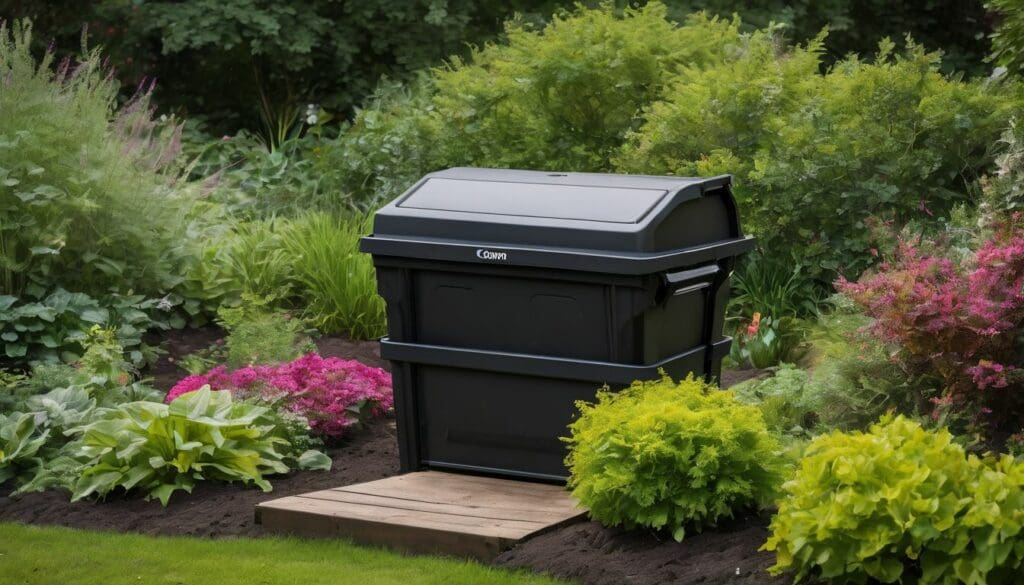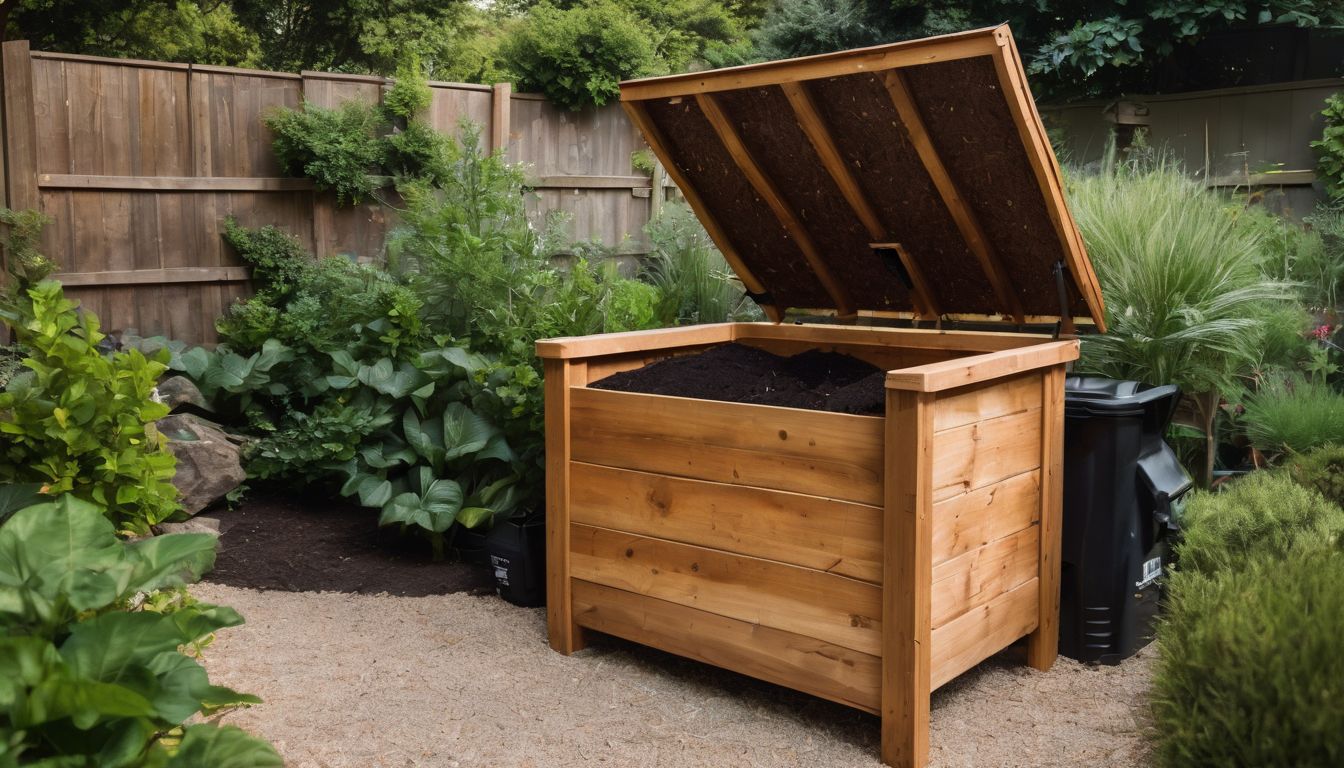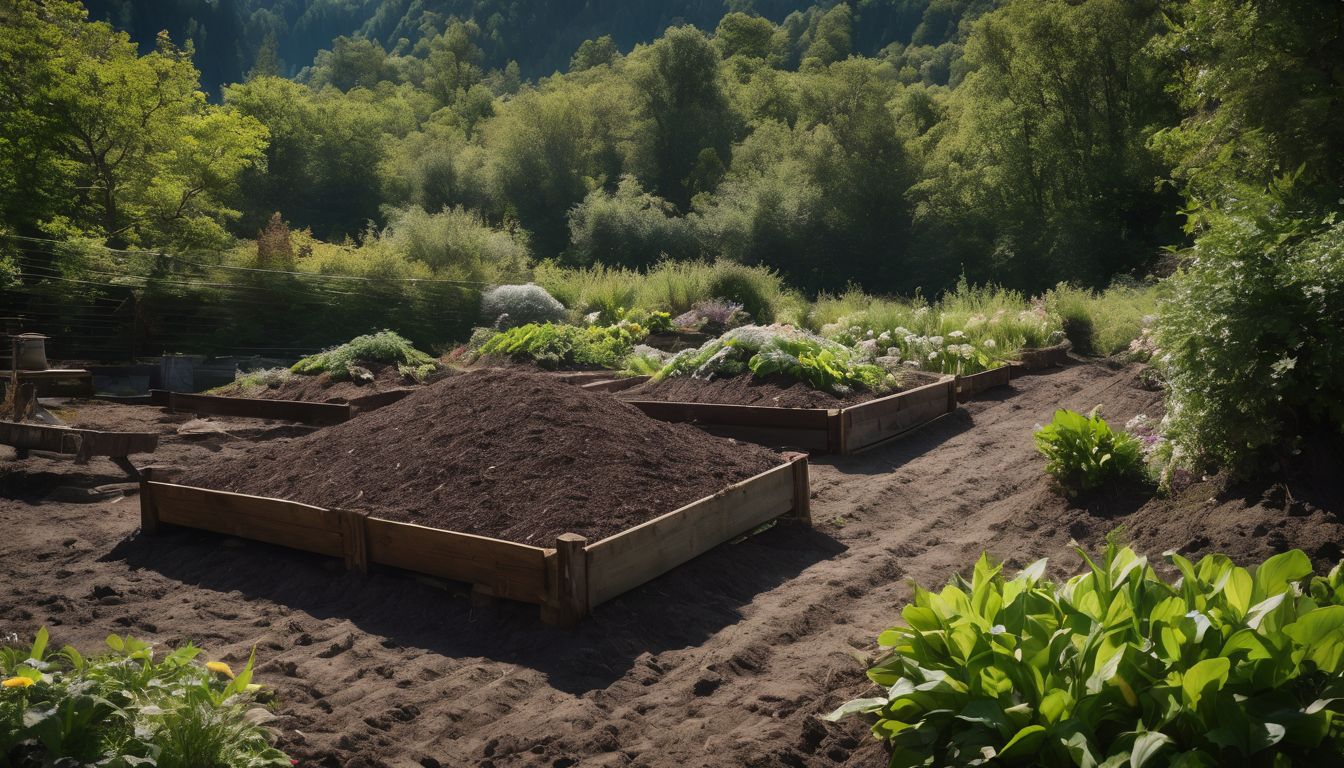Fed up with seeing food scraps go to waste? Every year, millions of tonnes of bio-waste fill landfills, releasing harmful greenhouse gases. Our guide to composting offers a smart solution that turns your kitchen leftovers into valuable garden gold while supporting a circular economy.
Dive in and let’s turn waste into wonder!
Key Takeaways
- Composting turns bio – waste like food scraps into valuable soil improvers, cutting down methane emissions from landfills.
- Circular economy principles encourage keeping materials in use longer and regenerating natural systems, with composting playing a key role.
- Products labeled as compostable should meet certain standards; look for certifications such as EN 13432 or ASTM D6400 to ensure quality.
- Large – scale composting facilities help manage organic waste effectively, leading to reduced landfill use and promoting sustainable agriculture.
- Incorporating composting into our daily routines supports circular economy goals while helping to preserve the planet’s resources.
Understanding the Circular Economy
The circular economy aims to reduce waste and make the most of resources, promoting sustainability and environmental regeneration. Initiatives include recycling, refurbishing and reusing products to minimise the impact on the environment.
Examples include clothing rental services and the development of biodegradable packaging materials.
Principles and goals
Circular economy principles aim to keep products, equipment, and infrastructure in use for longer, thus reducing the need to extract new resources from the Earth. They focus on designing waste out of the system and regenerating natural systems.
Instead of making and disposing products in a linear fashion, a circular approach considers the entire lifecycle of an item – from production through to its end-of-life handling.
Goals include minimising waste, promoting resource-efficient practices such as recycling and composting, and encouraging reuse and refurbishment wherever possible. This sustainable model supports environmental regeneration by closing loops where organic materials return to the earth as nutrients rather than pollutants.
Products are engineered to be more durable or easily dismantled for repair or recycling. By prioritising these strategies, we contribute towards soil improvement while tackling issues like plastic pollution.
Examples of circular economy initiatives
Circular economy initiatives aim to reduce waste and maximise the use of resources. Here are some examples:
- Reusable Packaging: Companies are adopting reusable packaging systems to minimise single-use plastics and reduce packaging waste.
- Product-as-a-Service Models: Businesses are shifting towards offering services rather than products, ensuring product longevity and reducing resource consumption.
- Waste-to-Energy Programmes: Energy generation from organic waste through processes like anaerobic digestion contributes to a circular economy by utilising bio-waste for productive purposes.
- Material Upcycling: Companies are repurposing waste materials and turning them into new products, prolonging the lifespan of resources.
- Sharing Platforms: Collaborative consumption platforms promote sharing and reuse of goods, reducing the demand for new products and minimising environmental impact.
- Closed-Loop Manufacturing Systems: Industries are implementing closed-loop systems where products’ components can be easily disassembled, reused, or recycled at the end of their lifecycle.
Composting: A Solution for Bio-waste
Composting is an effective solution for bio-waste, such as food waste and organic materials, as it can be converted into valuable soil improvers and fertilisers. Understanding the benefits of composting and how it works is crucial in promoting a circular economy and reducing environmental impact.
Benefits of composting
How composting works
Transitioning from the benefits of composting to understanding how it works sheds light on an essential process in waste diversion and soil regeneration. Composting works by decomposing organic materials, such as food scraps and garden waste, through a controlled breakdown facilitated by microorganisms.
This biological process occurs in an environment with adequate moisture, oxygen, and appropriate carbon-to-nitrogen ratio. As these materials break down, they transform into nutrient-rich humus that aids in improving soil fertility while reducing the amount of biowaste sent to landfills.
The composting process involves layering green and brown organic matter like lawn clippings, leaves, fruit peel, and coffee grounds. The microorganisms responsible for decomposition thrive under warm temperatures achieved by turning or aerating the pile regularly to control odours and accelerate breakdown.
Compostable Products: Design and Recycling
When designing or purchasing compostable products, it’s important to understand the differences between biodegradable, compostable, and bio-based plastics. Considerations for design should prioritise sustainable materials and end-of-life solutions that align with circular economy principles.
Differentiating between biodegradable, compostable, and bio-based plastics
Understanding the differences between biodegradable, compostable, and bio-based plastics is crucial for making environmentally responsible choices. Here is a comparison in table format:
| Type | Definition | Breakdown Process | Environmental Impact |
|---|---|---|---|
| Biodegradable Plastics | Materials that decompose by bacteria or other living organisms. | Naturally occurs over time, but duration varies significantly. | Potentially less harmful, but can leave toxic residue and take years to break down. |
| Compostable Plastics | Plastics that break down into non-toxic components within a specific time and conditions. | Requires industrial composting facilities to break down effectively. | Turns into nutrient-rich material, with no harmful residues. |
| Bio-based Plastics | Derived from biological substances rather than petroleum. | Not necessarily biodegradable or compostable; depends on chemical structure. | Reduces reliance on fossil fuels, but end-of-life impact varies. |
Opt for compostable products to ensure a lower environmental footprint and contribute to a healthier planet. Assess products carefully, considering both sourcing and end-of-life scenarios. Choose wisely to support the circular economy effectively.
Considerations for designing or purchasing compostable products
When considering purchasing compostable products, look for certifications such as EN 13432 or ASTM D6400 to ensure the product meets industry standards. Assess the product’s end-of-life options, including whether it can be home-composted or if industrial facilities are required.
Additionally, evaluate the product’s durability and performance to ensure it meets your specific needs while being eco-friendly.
When designing compostable products, focus on using renewable materials such as plant-based plastics and organic fibres. Consider the entire lifecycle of the product, from material sourcing to disposal or recycling.
Composting and the Circular Economy
Composting plays a crucial role in the circular economy by diverting bio-waste from landfills and transforming it into organic soil improvers. This process not only reduces waste but also supports the regeneration of the environment through natural fertilisation and maintenance.
The role of composting in a circular economy
Composting plays a vital role in a circular economy by transforming bio-waste into organic soil improvers. Through composting, waste materials such as food scraps and garden trimmings are diverted from landfills, contributing to the regeneration of the environment.
This process not only reduces methane emissions but also provides valuable fertilisation for agricultural lands, supporting sustainable and eco-friendly practices. Compostable packaging and biodegradable products further contribute to this cycle by promoting the maintenance of resources within a closed-loop system.
Incorporating composting into our daily lives supports the principles and goals of a circular economy, creating a positive impact on waste diversion while fostering environmental regeneration.
The impact of composting on the environment
Composting enriches the soil, reduces greenhouse gas emissions, and minimises landfill waste. Nutrient-rich compost nourishes the soil, promoting healthier plant growth and reducing the need for chemical fertilisers.
By diverting organic waste from landfills, composting diminishes methane emissions, a potent greenhouse gas contributing to global warming. Additionally, as food scraps break down aerobically in compost systems rather than anaerobically in landfills, fewer harmful leachates are produced.
The positive impact of composting on the environment is substantial and multifaceted. From mitigating climate change to improving soil health, this natural process plays a crucial role in promoting sustainability and environmental regeneration.
Composting on a Large Scale
Large-scale composting systems utilise a combination of aerobic and anaerobic processes to break down organic waste into nutrient-rich soil. These systems play a crucial role in diverting bio-waste from landfills, reducing greenhouse gas emissions, and promoting environmental sustainability.
Overview of composting systems and processes
Composting systems vary, but the general process involves collecting organic waste and creating an environment for it to decompose. Worms or microorganisms break down the material, producing nutrient-rich compost that can be used as a natural fertiliser.
Systems may include windrow composting, where the waste is formed into rows and turned regularly, or in-vessel composting which uses enclosed containers to control factors like temperature and oxygen levels.
The processes consider various factors such as aeration, moisture content, temperature regulation and carbon-to-nitrogen ratio for optimal decomposition. Different methods have distinct advantages and challenges but contribute significantly to reducing methane emissions from landfills while promoting soil health.
Impact on waste diversion and management
Composting systems have a significant impact on waste diversion and management. By diverting organic materials from landfills, composting reduces the volume of waste in landfills, minimising the environmental burden associated with landfill disposal.
This process also plays a critical role in managing municipal solid waste by transforming food scraps and yard waste into nutrient-rich compost. As a result, municipalities can reduce their reliance on costly landfill space while creating valuable resources for soil regeneration and agricultural use.
Large-scale composting facilities manage bio-waste efficiently by processing substantial amounts of organic material to create high-quality compost. The resulting product not only addresses the issue of excess waste but also contributes to sustainable land management practices.
Conclusion
In conclusion, composting plays a vital role in creating a circular economy by regenerating the environment and reducing waste. It offers numerous benefits such as enriching soil quality and decreasing greenhouse gas emissions.
By embracing composting, we contribute to the conservation of resources and promote sustainable living practices. Embracing this solution is essential for building a more sustainable future.
FAQs
1. What is composting in a circular economy?
Composting in a circular economy involves breaking down organic waste to regenerate the environment and reduce landfill use.
2. Why should we compost in the circular economy?
We compost because it returns valuable nutrients to the soil, supports plant growth, and plays a crucial role in the regeneration of our environment within a sustainable economic system.
3. How does composting help the circular economy?
Composting reduces waste by recycling organic materials back into the earth, which helps maintain natural resource cycles without depleting them – key for a healthy circular economy.
4. Can everyone contribute to composting for a better environment?
Yes, individuals and businesses can all take part in composting practices to enhance soil quality and promote environmental regeneration as part of an eco-friendly lifestyle or business model.





